Modeling RL Electrical Circuit by Multifactor Uncertain Differential Equation
Abstract
:1. Introduction
2. Uncertain RL Circuit Equation
2.1. Uncertain RL Circuit Model
2.2. Solution of Uncertain RL Circuit Equation
2.3. Inverse Uncertainty Distribution of Solution
2.4. Examples of Uncertain RL Circuit Equation
3. Applications of Solution
3.1. Supremum of Solution
3.2. Time Integral of Solution
3.3. Example of Applications
4. Parameter Estimation
5. Conclusions
6. Future Work
Author Contributions
Funding
Institutional Review Board Statement
Informed Consent Statement
Data Availability Statement
Acknowledgments
Conflicts of Interest
References
- Liu, B. Uncertainty Theory, 2nd ed.; Springer: Berlin, Germany, 2007. [Google Scholar]
- Liu, B. Some research problems in uncertainty theory. J. Uncertain Syst. 2009, 3, 3–10. [Google Scholar]
- Liu, B. Fuzzy process, hybrid process and uncertain process. J. Uncertain Syst. 2008, 2, 3–16. [Google Scholar]
- Chen, X.; Liu, B. Existence and uniqueness theorem for uncertain differential equations. Fuzzy Optim. Decis. Ma. 2010, 9, 69–81. [Google Scholar]
- Gao, Y. Existence and uniqueness theorem on uncertain differential equations with local Lipschitz condition. J. Uncertain Syst. 2012, 6, 223–232. [Google Scholar]
- Yao, K.; Gao, J.; Gao, Y. Some stability theorems of uncertain differential equation. Fuzzy Optim. Decis. Ma. 2013, 12, 3–13. [Google Scholar] [CrossRef]
- Sheng, Y.; Wang, C. Stability in the p-th moment for uncertain differential equation. J. Intell. Fuzzy Syst. 2014, 26, 1263–1271. [Google Scholar] [CrossRef]
- Yao, K.; Ke, H.; Sheng, Y. Stability in mean for uncertain differential equation. Fuzzy Optim. Decis. Ma. 2015, 14, 365–379. [Google Scholar] [CrossRef]
- Yang, X.; Ni, Y.; Zhang, Y. Stability in inverse distribution for uncertain differential equations. J. Intell. Fuzzy Syst. 2017, 32, 2051–2059. [Google Scholar] [CrossRef] [Green Version]
- Yao, K.; Chen, X. A numerical method for solving uncertain differential equations. J. Intell. Fuzzy Syst. 2013, 25, 825–832. [Google Scholar] [CrossRef]
- Yang, X.; Shen, Y. Runge-Kutta method for solving uncertain differential equations. J. Uncertain. Anal. Appl. 2015, 3, 17. [Google Scholar] [CrossRef] [Green Version]
- Yang, X.; Ralescu, D. Adams method for solving uncertain differential equations. Appl. Math. Comput. 2015, 270, 993–1003. [Google Scholar] [CrossRef]
- Gao, R. Milne method for solving uncertain differential equations. Appl. Math. Comput. 2016, 274, 774–785. [Google Scholar]
- Yao, K.; Liu, B. Parameter estimation in uncertain differential equations. Fuzzy Optim. Decis. Ma. 2020, 19, 1–12. [Google Scholar] [CrossRef]
- Liu, Z. Generalized moment estimation for uncertain differential equations. Appl. Math. Comput. 2021, 392, 125724. [Google Scholar] [CrossRef]
- Yang, X.; Liu, Y.; Park, G. Parameter estimation of uncertain differential equation with application to financial market. Chaos Solitons Fract. 2020, 139, 110026. [Google Scholar] [CrossRef]
- Sheng, Y.; Yao, K.; Chen, X. Least squares estimation in uncertain differential equations. IEEE Trans. Fuzzy Syst. 2020, 28, 2651–2655. [Google Scholar] [CrossRef]
- Liu, Y.; Liu, B. Estimating Unknown Parameters in Uncertain Differential Equation by Maximum Likelihood Estimation. 2020. submitted. [Google Scholar]
- Lio, W.; Liu, B. Initial value estimation of uncertain differential equations and zero-day of COVID-19 spread in China. Fuzzy Optim. Decis. Ma. 2021, 20, 177–188. [Google Scholar]
- Chen, X.; Li, J.; Xiao, C.; Yang, P. Numerical solution and parameter estimation for uncertain SIR model with application to COVID-19. Fuzzy Optim. Decis. Ma. 2021, 20, 189–208. [Google Scholar]
- Jia, L.; Chen, W. Uncertain SEIAR model for COVID-19 cases in China. Fuzzy Optim. Decis. Mak. 2021, 20, 243–259. [Google Scholar] [CrossRef]
- Bennett, W. Electrical Noise; McGraw-Hill: New York, NY, USA, 1960. [Google Scholar]
- Kampowsky, W.; Rentrop, P.; Schmidt, W. Classification and numerical simulation of electric circuits. Sur. Math. Ind. 1992, 2, 23–65. [Google Scholar]
- Penski, C. A new numerical method for SDEs and its application in circuit simulation. J. Comput. Appl. Math. 2000, 115, 461–470. [Google Scholar] [CrossRef] [Green Version]
- Kolarova, E. Modelling RL electrical circuits by stochastic differential equations. In Proceedings of the The International Conference on “Computer as a Tool”, Belgrade, Serbia, 21–24 November 2005; pp. 1236–1238. [Google Scholar]
- Kolarova, E. An application of stochastic integral equations to electrical networks. Acta Electrotech. Inform. 2008, 8, 14–17. [Google Scholar]
- Liu, Y. Uncertain circuit equation. J. Uncertain Syst. 2021, 14, 2150018. [Google Scholar] [CrossRef]
- Ye, T. Parameter Estimation in Multifactor Uncertain Differential Equation with Application to Stock Market; Technical Report; 2021. [Google Scholar]
- Ye, T.; Liu, B. Uncertain hypothesis test with application to uncertain regression analysis. Fuzzy Optim. Decis. Mak. 2021. [Google Scholar] [CrossRef]
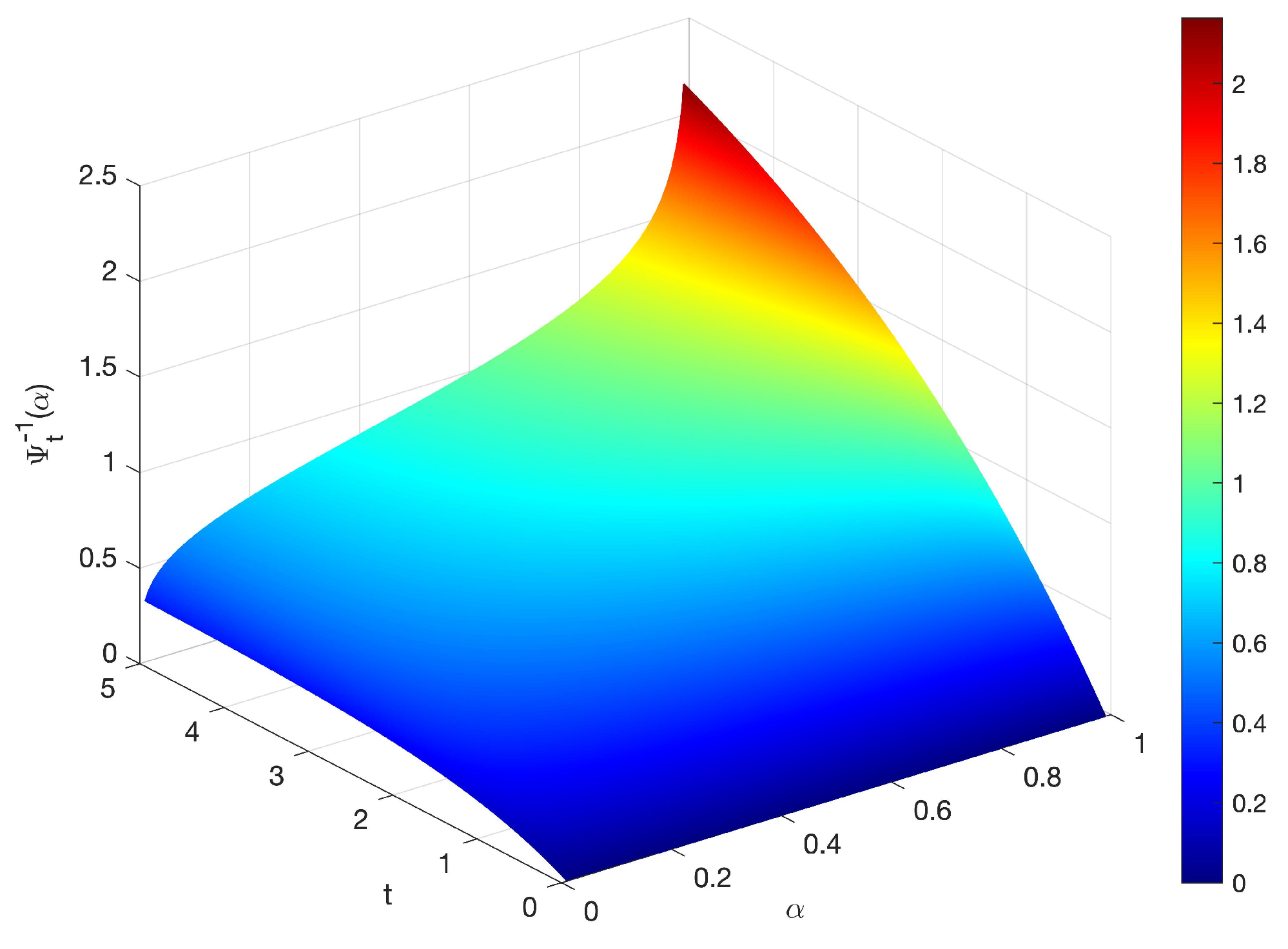
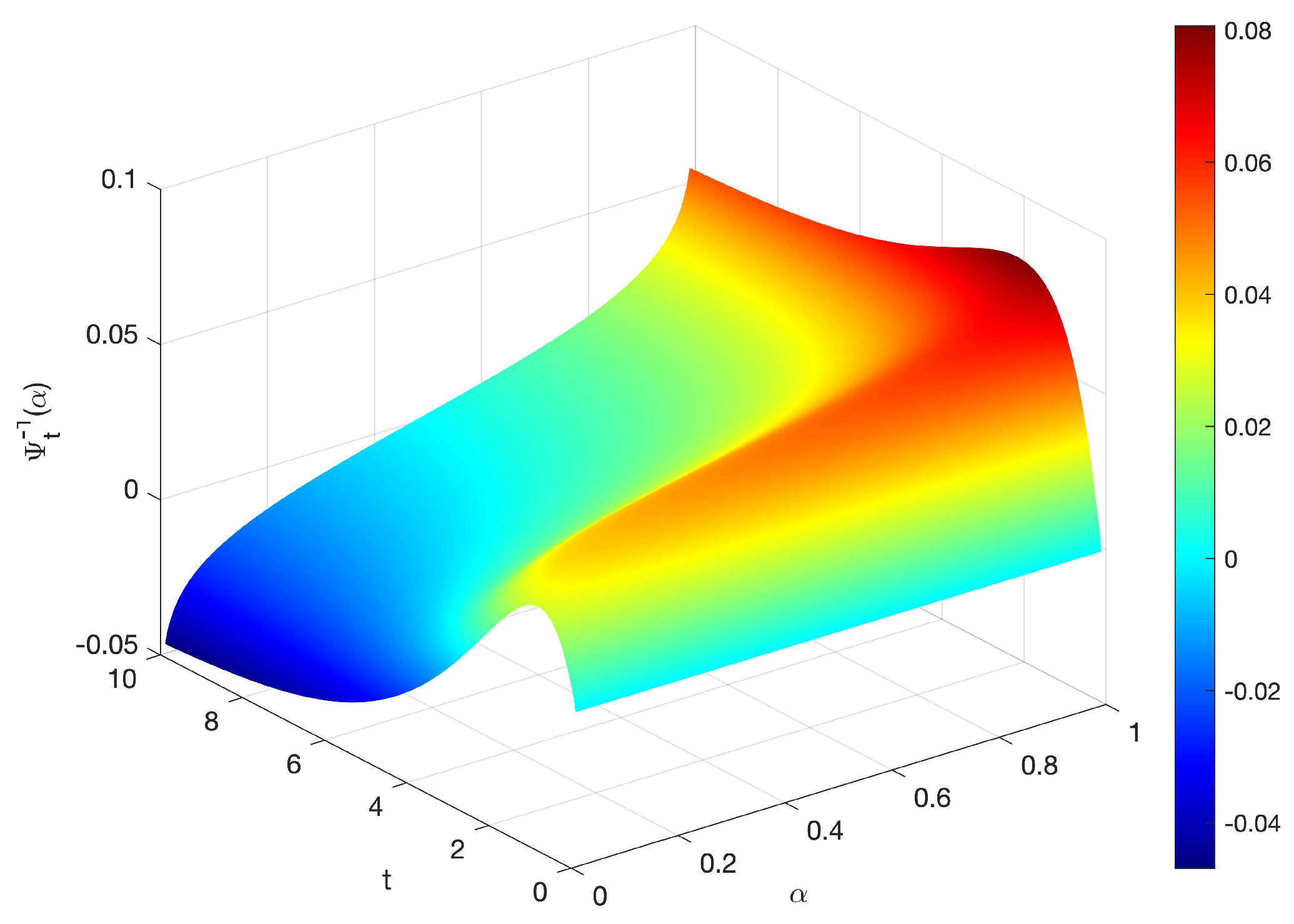
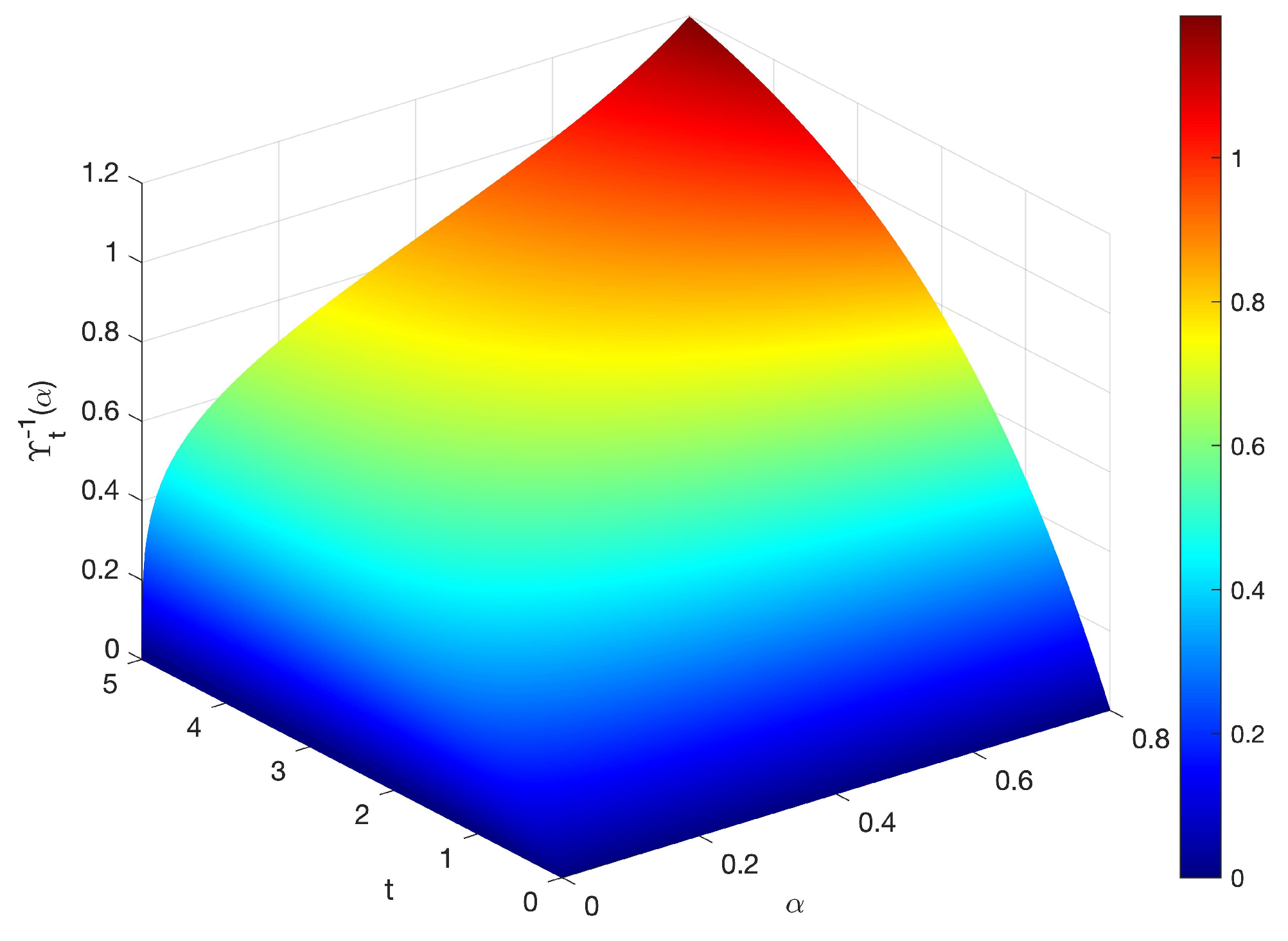
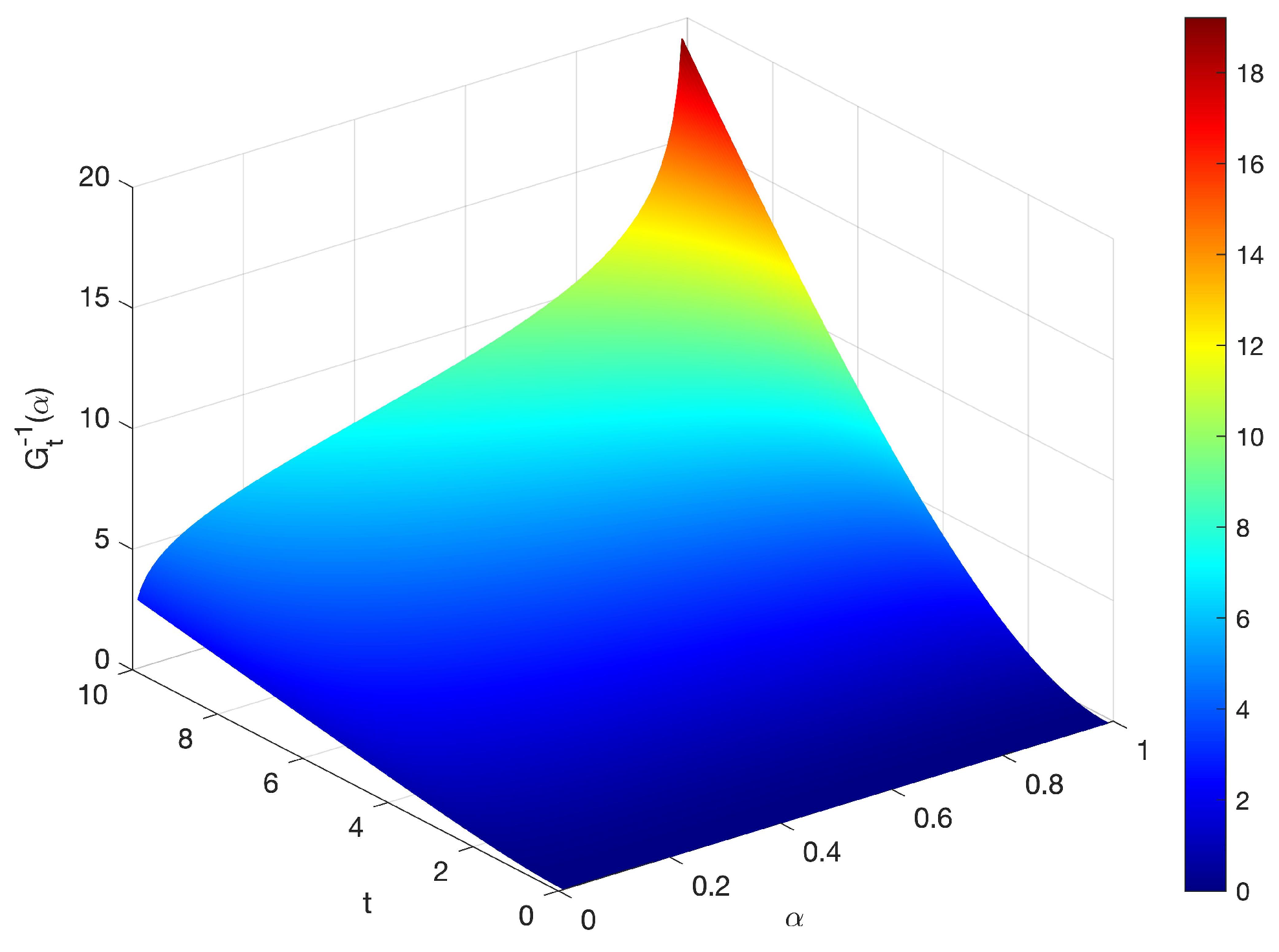
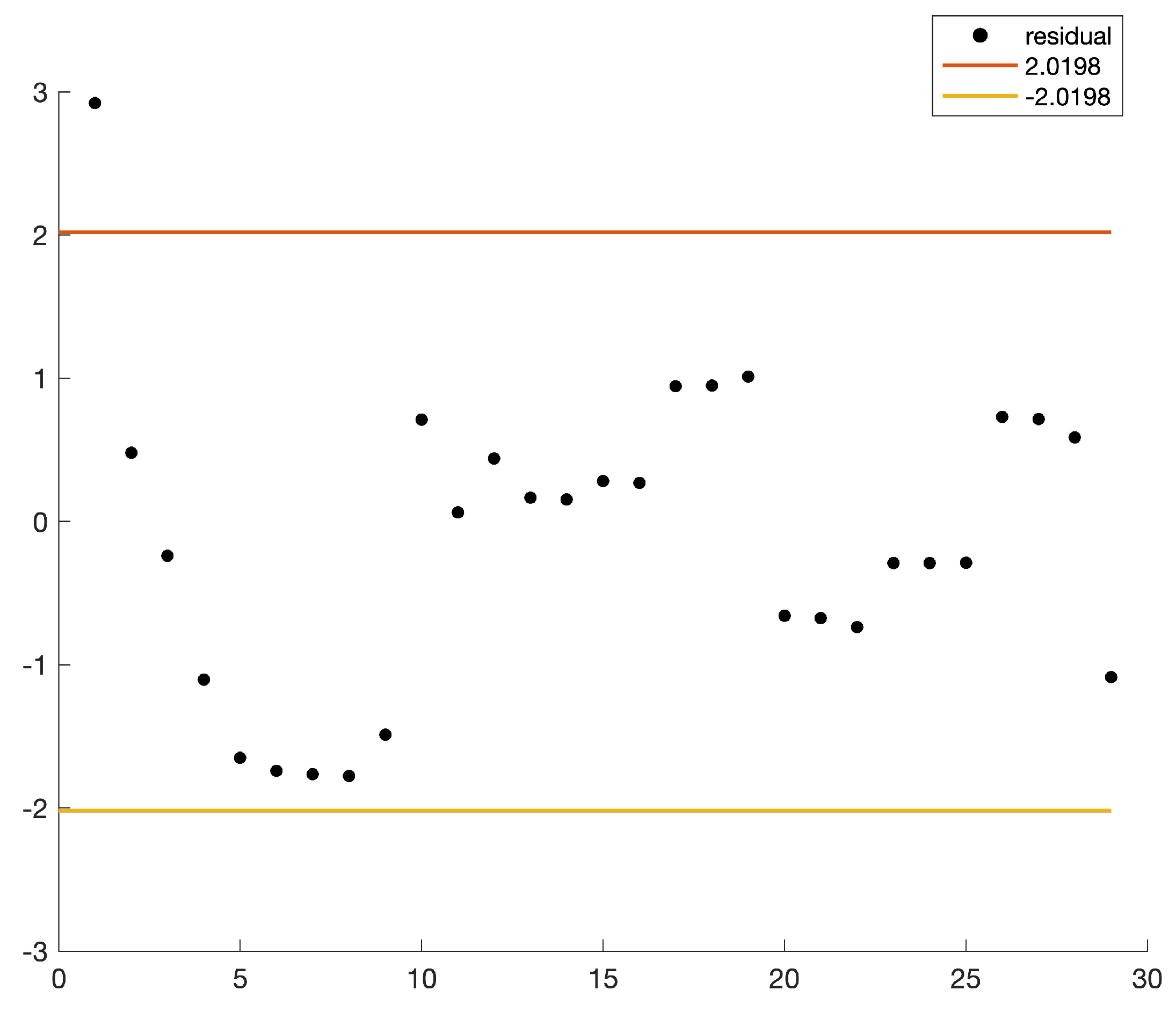
| (s) | 0.1615 | 0.3615 | 0.5615 | 0.7615 | 1.0000 | 1.1924 | 1.3924 | 1.5924 |
| (A) | 0.7248 | 1.4743 | 2.0879 | 2.5903 | 3.0718 | 3.3696 | 3.6241 | 3.8324 |
| (s) | 1.7924 | 2.0381 | 2.2283 | 2.6283 | 2.8283 | 3.2000 | 3.6000 | 3.8000 |
| (A) | 4.0030 | 4.1827 | 4.3398 | 4.5869 | 4.6780 | 4.8058 | 4.8994 | 4.9338 |
| (s) | 4.0000 | 4.4000 | 4.8000 | 5.0000 | 5.4000 | 5.8000 | 6.0000 | 6.4000 |
| (A) | 4.9621 | 5.0462 | 5.1027 | 5.1234 | 5.0635 | 5.0234 | 5.0086 | 5.0090 |
| (s) | 6.8000 | 7.0000 | 7.2000 | 7.4000 | 8.0000 | 9.2000 | ||
| (A) | 5.0092 | 5.0093 | 5.0376 | 5.0608 | 5.1080 | 4.8716 |
| j | 1 | 2 | 3 | 4 | 5 | 6 | 7 | 8 |
|---|---|---|---|---|---|---|---|---|
| 2.9205 | 0.4789 | −0.2392 | −1.1031 | −1.6516 | −1.7423 | −1.7655 | −1.7768 | |
| j | 9 | 10 | 11 | 12 | 13 | 14 | 15 | 16 |
| −1.4899 | 0.7102 | 0.0640 | 0.4388 | 0.1662 | 0.1536 | 0.2809 | 0.2700 | |
| j | 17 | 18 | 19 | 20 | 21 | 22 | 23 | 24 |
| 0.9452 | 0.9479 | 1.0107 | −0.6577 | −0.6759 | −0.7379 | −0.2892 | −0.2904 | |
| j | 25 | 26 | 27 | 28 | 29 | |||
| −0.2891 | 0.7299 | 0.7156 | 0.5866 | −1.0873 |
Publisher’s Note: MDPI stays neutral with regard to jurisdictional claims in published maps and institutional affiliations. |
© 2021 by the authors. Licensee MDPI, Basel, Switzerland. This article is an open access article distributed under the terms and conditions of the Creative Commons Attribution (CC BY) license (https://creativecommons.org/licenses/by/4.0/).
Share and Cite
Liu, Y.; Zhou, L. Modeling RL Electrical Circuit by Multifactor Uncertain Differential Equation. Symmetry 2021, 13, 2103. https://doi.org/10.3390/sym13112103
Liu Y, Zhou L. Modeling RL Electrical Circuit by Multifactor Uncertain Differential Equation. Symmetry. 2021; 13(11):2103. https://doi.org/10.3390/sym13112103
Chicago/Turabian StyleLiu, Yang, and Lujun Zhou. 2021. "Modeling RL Electrical Circuit by Multifactor Uncertain Differential Equation" Symmetry 13, no. 11: 2103. https://doi.org/10.3390/sym13112103
APA StyleLiu, Y., & Zhou, L. (2021). Modeling RL Electrical Circuit by Multifactor Uncertain Differential Equation. Symmetry, 13(11), 2103. https://doi.org/10.3390/sym13112103






